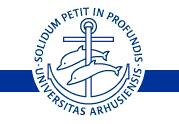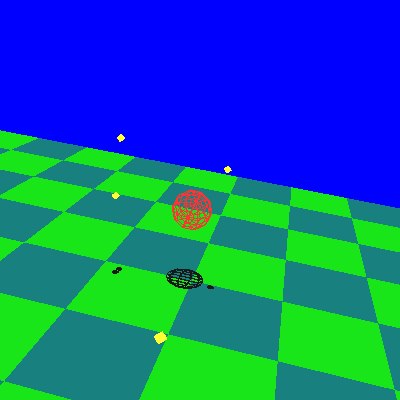
|
Computational Geometry (Fall 2004)
|

|

|
make to build your programs etc.
A simple programming example
This simple program illustrates the use of
GLUT and OpenGL i 2D from C++. The program should compile on both
Linux, IRIX and Windows. The program opens a window where a triangle
is displayed. The corners of the triangle can be moved by the
mouse. If you press the right mouse button a popup-menu appears where
you can create a new triangle or quit the program. Try resizing the
window and observe how all graphics scales automatically.
![[screenshot]](shot.jpg)
Note: The SGI machines support GLX (OpenGL over X) which means
that an OpenGL program running on one SGI may display on another SGI,
just like with ordinary X windows. This, however, does not work too
well with Linux unless you are using the unaccelerated Mesa OpenGL
libraries. To avoid problems: compile and run your programs on the
local machine.
A 3D example
This program illustrates how to program simple 3D
graphics with OpenGL and GLUT. The program controls a spherical cursor in 3D
using the mouse. Points can be placed in the 3D world by pressing the space
key. The camera can be rotated around the cursor while pressing the shift key
and moving the mouse. The program also draws a ground plane and shadows to make
it easier to judge the distance to objects.

GLUT reference documentation
GLUT (the Open GL Utility Toolkit) builds on top of OpenGL, and
provides an API which makes it easy to write simple, portable,
programs that use OpenGL.
You may learn more about GLUT via opengl.org
and
the GLUT reference documentation.
OpenGL reference documentation
OpenGL is a standard, cross-platform, API for drawing 3D and 2D graphics.
The OpenGL specifications are available at
opengl.org.
There is a tutorial on Gamedev.net.
GLU reference documentation
GLU (OpenGL Utilities) also builds on top of OpenGL, and is used by GLUT. GLU implements mipmapping support, polygon tessellation, quadrics and NURBS. The GLU specifications are available at opengl.org.
Peter Ørbæk, poe@daimi.au.dk, August 2001
Modified by Gerth Stølting Brodal, gerth@cs.au.dk, September 2004